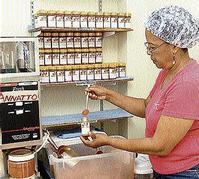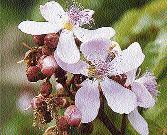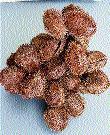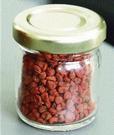Tesi Johnson, Gleaner Writer

Annatto farmer Monica Roberts has a processing plant in Kingston where the annatto seeds are ground and bottled, then distributed to local supermarkets. - Ian Allen/Staff Photographer
Many who read this article may have never before heard of 'annatto.' Those familiar with it might experience a wave of nostalgia for tinted codfish fritters, or richly coloured curried chicken dyed by 'natta'.
Annatto is a seed which contains a pigment known as bixin that gives it a deep red colour. This bixin content makes it useful as a dye, both for foods and cosmetics, and is often used to colour butter, cheeses, curries and soups, among other foods.
Jamaicans once farmed annatto commercially, especially in areas like St. Mary, where Annotto Bay got its name for the abundance of annatto plants. The practice of annatto farming here gradually died out, but many countries, especially in South America, still have an active annatto industry, including Brazil who is the world's largest exporter.
The advent of cheaper, more convenient artificial dyes once threatened the annatto industry, but amidst recent concerns about the safety of artificial dyes, annatto is being sought out as the preferred colouring.
Local farmers Monica and Sonny Roberts have begun the resurrection of the local annatto industry with their annatto-based Sunburst Products, made from home-grown annatto seeds.
From July to August, the Roberts' farm in the Pepper District of Manchester resembles a sea of orchids as the annatto plant blooms. The fruit is a 'spiny capsule', with orange-reddish pulp covering the seed, which when left to dry, usually by February, splits open to reveal the richly coloured seeds.
Processing plant
The Roberts have a processing plant in Kingston where they grind, bottle and label the annatto product before distributing it to local supermarkets such as: Family Pride, Super Value on Mannings Hill Road, Lee's Food Fair on Red Hills Road and Shopper's Fair.
"I spent years looking for it, until I found the plant in a friend's garden in Ocho Rios," explains Mrs. Roberts. From that one plant she got some seeds, and from then on began her quest to resurrect the common use of annatto in local households.
Mrs. Roberts explains that the plant has much potential as a major export crop. "It is hardy and requires very little care," she says, making it easy to grow. "It is a versatile food colouring and is healthy as it contains no sodium, starches or fat," she explains. "I started on just the excitement of bringing it back from virtual extinction," she says, but her efforts are now propelled by the prospect of exporting the product, and even its prospects for use in beauty products.



( L - R ) A, B, C
A: Annatto farmers Sonny Roberts and Monica Roberts' farm looks like an orchid patch when the flowers bloom and bees come in droves for the nectar.
B: The annatto fruit is a spiny capsule, which when dried, splits open to reveal red seeds.
C: Annatto pods and seeds.

